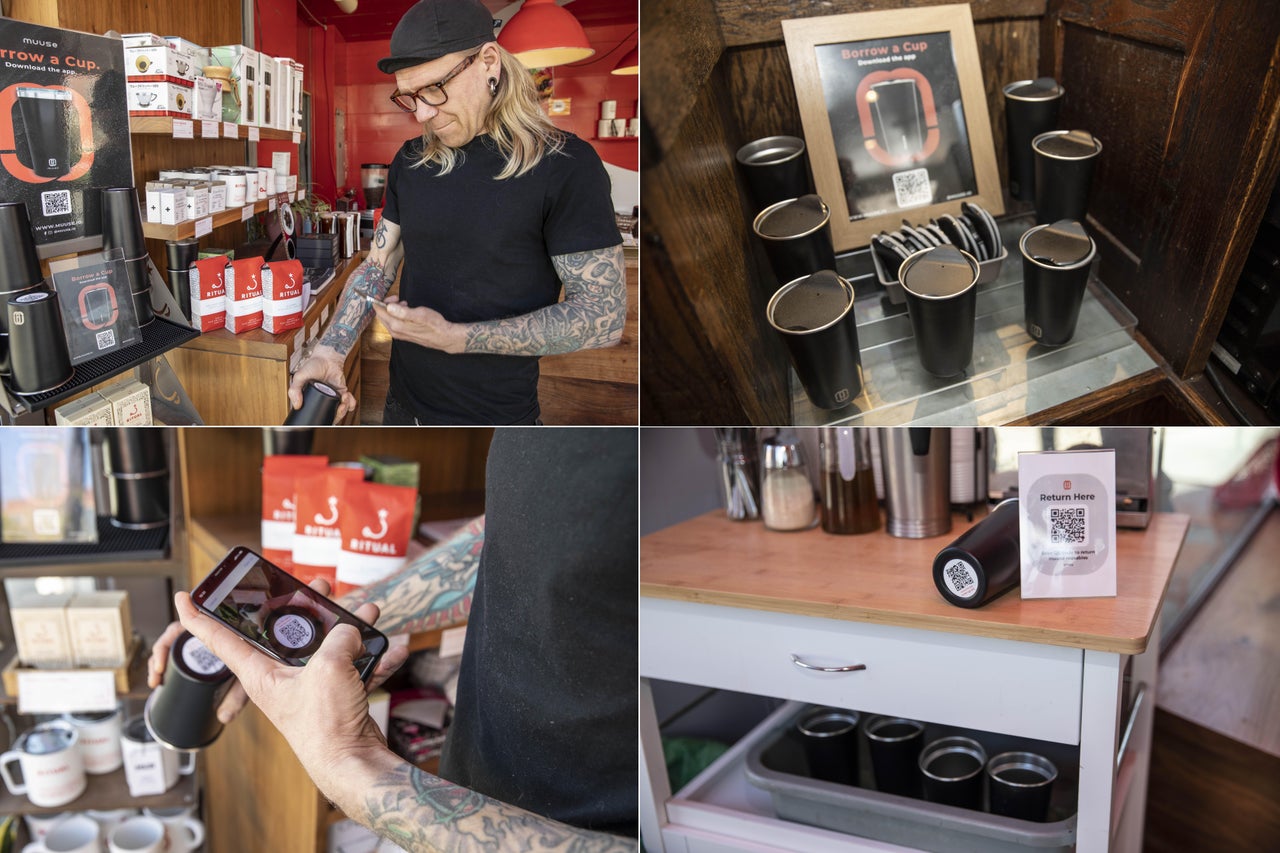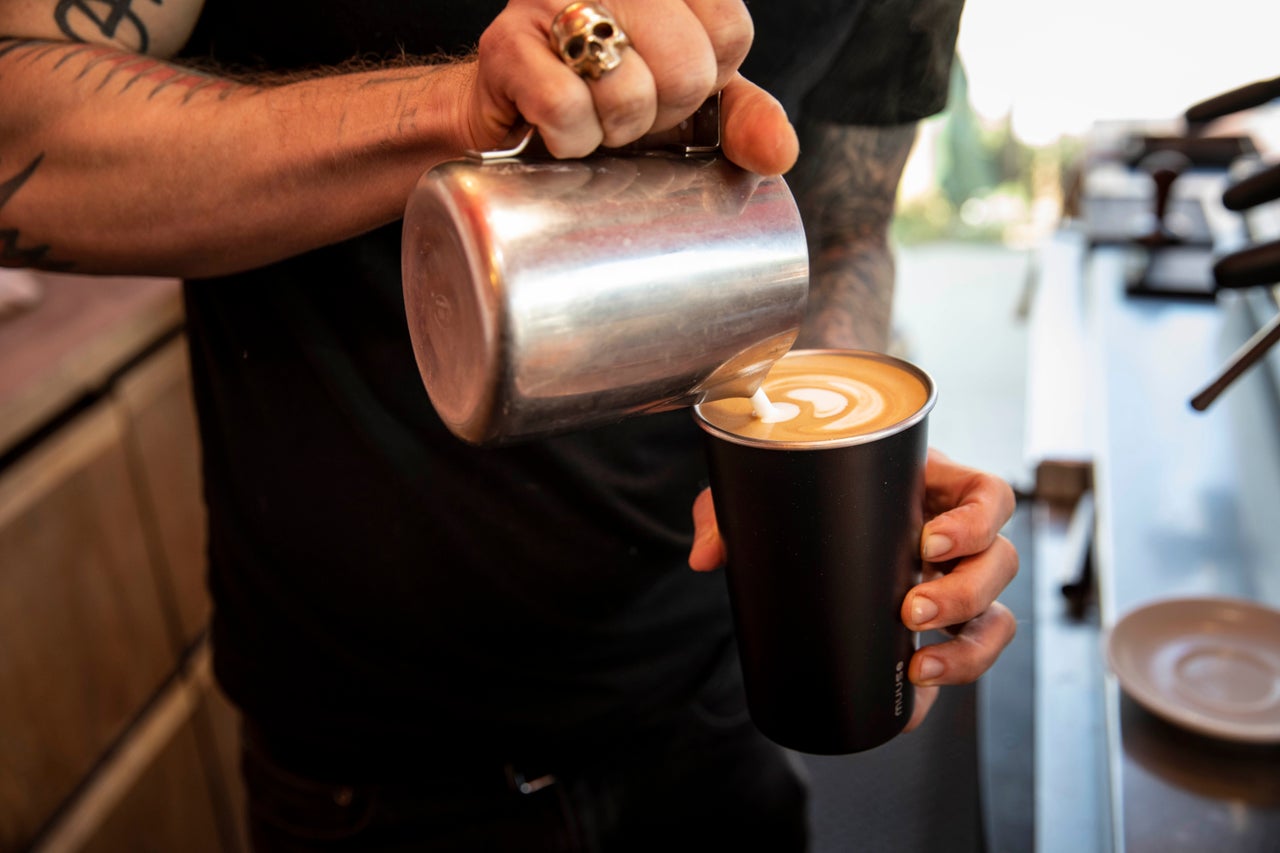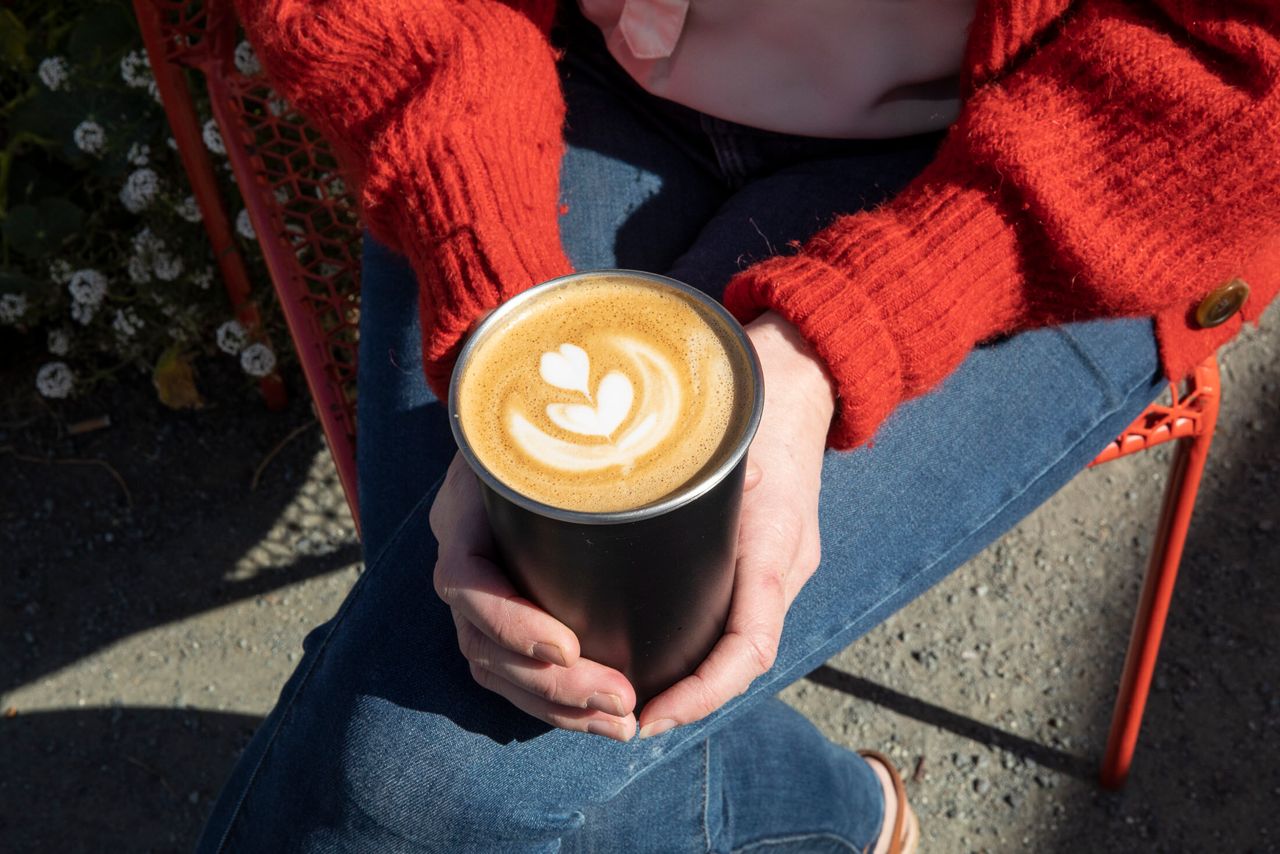Kyle Glanville and Charles Babinski opened their Los Angeles coffee pop-up G&B in 2012. It was a haven for java nerds — the kind of place that weighed every shot of espresso and served drip coffee in glass carafes with a small ceramic cup on the side. It was also pushing a climate-conscious approach: If you wanted your coffee to go, you could take that cupholder-compatible carafe with you — for a dollar deposit. There were no paper cups at G&B.
Between the huge amount of waste that single-use cups generate, and the negative effect they have on the taste of coffee, it was easy for Glanville and Babinski to say no to paper. They wanted to create a high-end coffee experience with a completely redefined approach to waste.
But if patrons were raving about the precisely pulled espresso, they were less than thrilled about the lack of cups. “It was like showing up to work to fight your customers every day,” Glanville said of the experience, “which is not the thing that we set out to do.” They held out during the pop-up’s run, but when their permanent G&B cafe opened in 2013, they relented and started stocking paper cups.
Glanville’s experience shows just how entrenched the culture of grabbing coffee to go is, and how difficult it is to shift mindsets. But these single-use cups — held for the few minutes it takes for someone to get their caffeine fix, and then chucked in the trash — represent a significant waste stream.
Every year, more than 260 billion paper cups are used around the globe for both hot and cold beverages; most cannot be recycled because of the coating used to keep them waterproof. Now, many in the beverage industry — from indie coffee shops all the way up to McDonald’s — are finally trying to innovate, charge, or shame our way out of the waste problem. In addition to investigating new materials for single-use cups that can be recycled, companies are designing durable, reusable to-go cups and scalable systems for lending them out to customers (and getting them back).
“We are at a tipping point today, with increasing demand for sustainable products from consumers, mounting regulatory pressures and clear business risks tied to being slow to adapt to the consequences of climate change and resource scarcity,” said Bridget Croke, vice president of external affairs at NextGen Consortium, an industry-wide partnership aimed at reducing food-packaging waste that includes massive chains such as Starbucks and McDonald’s.
A handful of startups are trying to make it easy for businesses to ditch disposables. Vessel describes itself as being like “bike sharing or a library book but for to-go mugs.” The service provides stainless steel cups to cafes (currently it’s in 18 locations in Berkeley, California, and Boulder, Colorado), which customers can check out with an app and return later at streetside kiosks or any participating shop. It’s free unless you lose (or steal) your mug; then Vessel charges your credit card $15 (or $2 for just the lid).

Last month, Eileen Rinaldi, the founder and CEO of Ritual Coffee, started serving coffee to go in double-walled stainless-steel cups from a company called Muuse in one of her six Bay Area shops. Customers download the Muuse app and scan the QR code on the side of their cup to check it out for a five-day period. Using the cup earns them a 25-cent discount on their coffee, but if the cup isn’t returned, the customer is charged $15 through the app. Ritual is trying out the system as part of a larger pilot program supported by NextGen.
Rinaldi said that Ritual customers seem primed to change their behavior when it comes to single-use cups, in contrast to the reaction Glanville’s customers had to the carafes. “We’re finding that people just need the slightest prompt — ‘Would you like to try this new reusable cup?’ — and that’s all it takes,” she said.
“In terms of the history of the coffee industry, getting coffee in a to-go cup is relatively new,” said Rinaldi. “It’s still not done in many countries (except by American tourists), so I think we’re capable of shifting to either taking the few minutes it takes to drink coffee at the cafe or figuring out how to get a reusable travel cup built into our routines.”
(It remains to be seen whether the shift will be interrupted by coronavirus, as major chains including Starbucks and Dunkin’ have put a hold on accepting customers’ reusable mugs amid mounting fears about the spread of the virus. For the time being, Rinaldi is keeping the Muuse cups behind the counter, so only employees handle them before they’re filled. The other two coffee shops HuffPost spoke to for this article are pausing their reusable cup schemes.)
In Portland, Maine, Will Pratt said customers at Tandem Coffee, the cafe-bakery he co-owns with Kathleen Pratt, have been receptive to the “scrappy,” gently confrontational solution the pair introduced at their two locations last year. Instead of offering a discount to people who bring in a reusable cup, Tandem employees ask customers if they need a paper cup to go, and charge an extra quarter if they do.

Their new pricing model has changed the culture in their cafes, Pratt said. Customers will sometimes decide to stay instead of paying the extra quarter. “The new normal is to use a reusable cup; the abnormal thing to do is to use a single-use cup,” he explained.
When they debuted the new approach, Tandem for a time sold the travel mugs stocked at its cafes at cost, foregoing profit with the hopes of getting more customers onboard. It seems to have worked: Tandem has gone from serving around 70% of its drinks in single-use cups in 2018 down to 43%. Pratt wants to push things further, and is currently conducting a waste audit to see where else Tandem can cut out more of single-use paper and plastic.
In the last eight years, Glanville has expanded G&B to a small empire of eight shops across L.A. The glass carafes may be a thing of the past, but he’s remained concerned with waste and has kept on the lookout for a better reusable cup solution. Recently he landed on a new cup made of reclaimed bamboo fiber that he will soon make available as a paper alternative. But Glanville ultimately believes the best means of limiting waste will be to encourage people to order their coffee to stay.
“If we want people to leave out single-use, the way that we see that happening is getting people to drink out of ceramic,” he said. “You have to do everything that you can to make your space, your service, the comfort levels, the music, the temperature — you have to make everything add up to making the most enjoyable experience for them.” At some of Glanville’s shops, 40% of orders are to stay, which is very high for the industry, he said.
Riding the wave of his pay-less, stay-more success, Pratt is going to cut out single-use cups entirely for Earth Day this year, to show customers that not being able to get your coffee on the go isn’t the end of the world. “We won’t use any single-use cups that day,” he said, “and hopefully the sun will rise the next day.”
HuffPost’s “Work In Progress” series focuses on the impact of business on society and the environment and is funded by Porticus. It is part of the “This New World” series. All content is editorially independent, with no influence or input from Porticus. If you have an idea or tip for the editorial series, send an email to thisnewworld@huffpost.com.
